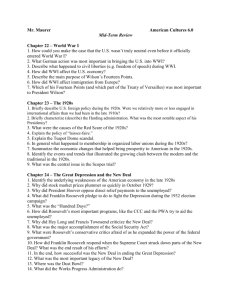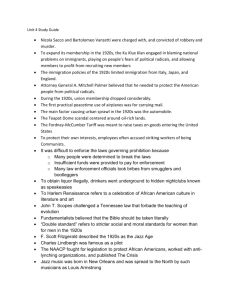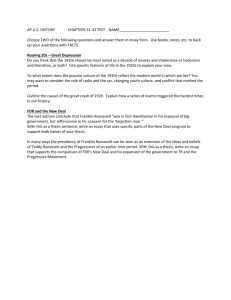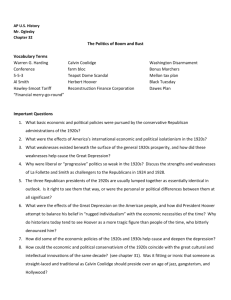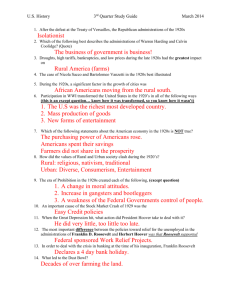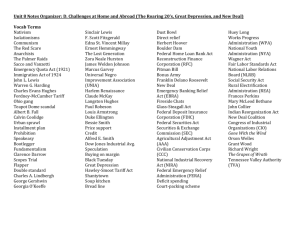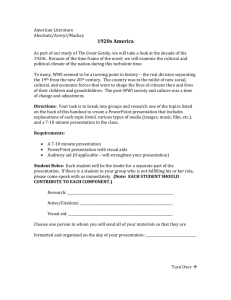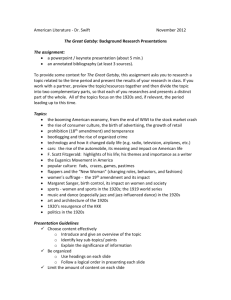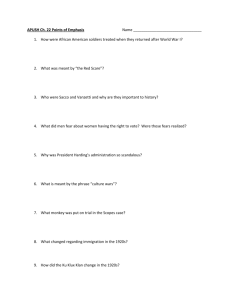Unit 6 Study Guide
advertisement
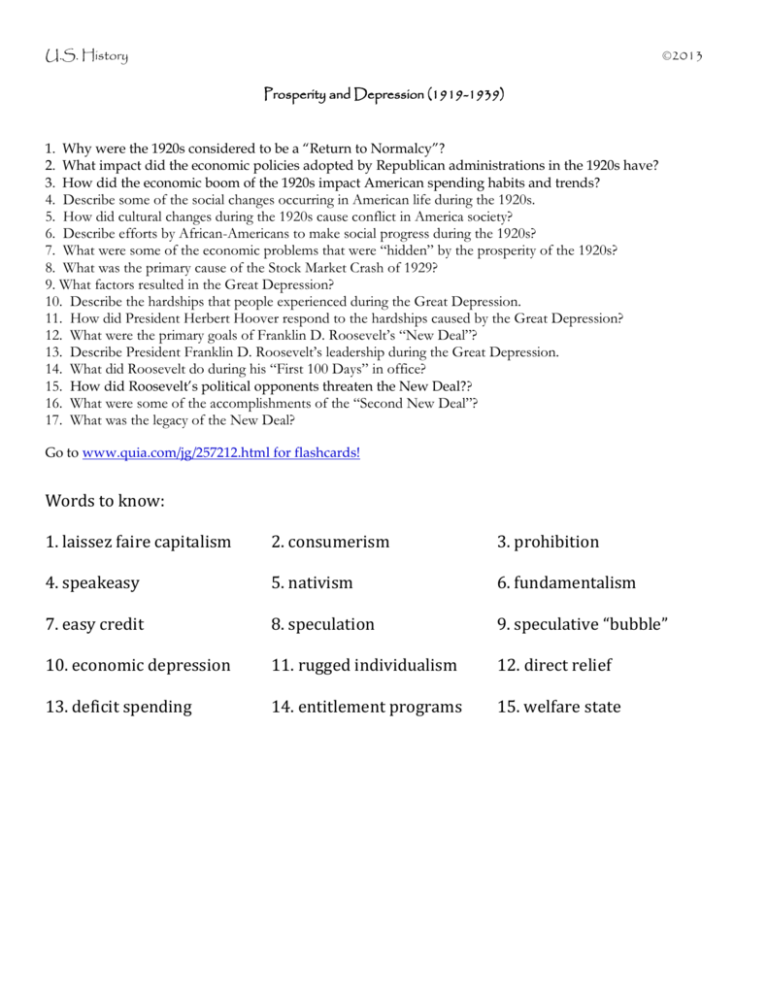
U.S. History ©2013 Prosperity and Depression (1919-1939) 1. Why were the 1920s considered to be a “Return to Normalcy”? 2. What impact did the economic policies adopted by Republican administrations in the 1920s have? 3. How did the economic boom of the 1920s impact American spending habits and trends? 4. Describe some of the social changes occurring in American life during the 1920s. 5. How did cultural changes during the 1920s cause conflict in America society? 6. Describe efforts by African-Americans to make social progress during the 1920s? 7. What were some of the economic problems that were “hidden” by the prosperity of the 1920s? 8. What was the primary cause of the Stock Market Crash of 1929? 9. What factors resulted in the Great Depression? 10. Describe the hardships that people experienced during the Great Depression. 11. How did President Herbert Hoover respond to the hardships caused by the Great Depression? 12. What were the primary goals of Franklin D. Roosevelt’s “New Deal”? 13. Describe President Franklin D. Roosevelt’s leadership during the Great Depression. 14. What did Roosevelt do during his “First 100 Days” in office? 15. How did Roosevelt’s political opponents threaten the New Deal?? 16. What were some of the accomplishments of the “Second New Deal”? 17. What was the legacy of the New Deal? Go to www.quia.com/jg/257212.html for flashcards! Words to know: 1. laissez faire capitalism 2. consumerism 3. prohibition 4. speakeasy 5. nativism 6. fundamentalism 7. easy credit 8. speculation 9. speculative “bubble” 10. economic depression 11. rugged individualism 12. direct relief 13. deficit spending 14. entitlement programs 15. welfare state U.S. History ©2013 Facts to Know Unit 6 1. The United States’ refusal to join the League of Nations is an example of which foreign policy? 2. What scandal occurred while Warren G. Harding was president? 3. What economic policies were enacted under Republican administrations during the 1920s? 4. During the 1920s, which business practice offered easy credit to consumers? 5. Which group represented social change for women during the 1920s? 6. “Speakeasies” and “bootlegging” were a result of which policy during the 1920s? 7. Which new form of music became popular because of the Harlem Renaissance? 8. List at least one new technology purchased by most households during the 1920s. 9. What trial exemplified the conflict between modern science and religion during the 1920s? 10. Louis Armstrong & Langston Hughes are associated with which African-American cultural movement? 11. Which event was an example of nativism during the 1920s? 12. What group grew in membership during the 1920s by opposing immigrants and African-Americans? 13. What financial practice enabled investors to borrow money to buy stock during the 1920s? 14. What was “Black Tuesday”? 15. What was the primary cause of the Stock Market Crash of 1929? 16. List some of the hardships endured by people during the Depression. 17. What method did Herbert Hoover favor to respond to America’s problems during the Depression? 18. Which event symbolized Hoover’s failure to bring America out of the Depression? 19. What were the primary goals of President Franklin D. Roosevelt’s “New Deal”? 20. How did President Franklin Roosevelt communicate his agenda to the American people? 21. What New Deal programs were enacted to create jobs for the unemployed? 22. What New Deal legislation boosted the incomes of farmers by paying them to limit farm production? 23. What New Deal program built dams for flood-control and hydroelectric power in the South? 24. What New Deal legislation was enacted to regulate industry and protect the rights of labor? 25. Which New Deal program was enacted to regulate fair trading practices in the stock market? 26. Which New Deal program provides pension benefits to the elderly? 27. What group benefited most from the Wagner Act? 28. What was the most significant long-term effect of the New Deal?
